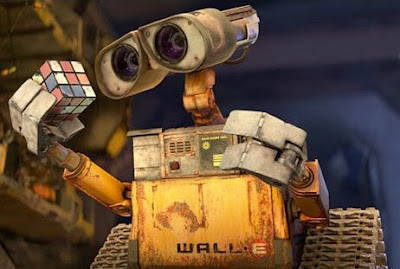If you haven't seen Wall-E, use your kids as an excuse, say your pet hamster digs Pixar, whatever it takes to get you to the cashier with the DVD in-hand. This is one of the funniest, heartwarmingest Disney movies ever. The bad news is, it preaches a pretty sad message that we all better start paying attention to. The good news is, there are no princesses, no motherless fawns, no fairies.
When the Earth became so covered in garbage that no plant or animal life could survive, humans escaped on a giant ship -- and forgot to turn off one "Waste Allocation Load Lifter - Earth Class." This last WALL-E robot just carries out his programming, stacking trash and collecting nifty antiques.

When another recon robot, Eve, arrives to see if life is once again sustainable, it leads Wall-E to the human ship, where for 700 years humans have hovered while their bones deteriorate.
*Spoiler Alert* skip to the next paragraph if you want to be surprised by the end. But come on, it’s Pixar, doesn’t everyone see these in the theater? Separately, both 'bots each run into danger and chaos, but finally, when they work as a team, Wall-E and Eve ... (wait for it) ... SAVE the human race. But in a way cooler way than Bruce Willis or the Rebel Alliance. No landing on asteroids or blowing stuff up, they just… plant a tree. Cue symphony.
The commentary on this one was interesting, and caught our attention in one particular point: the director discussed how scientists have conducted bed rest studies to examine the long-term effects of weightlessness on the body, in terms of muscle and bone loss. Hey, that’s us! In the film, all the humans have to learn to walk again… and boy do we know that feeling! We’ll never take our feet and bones for granted again.


































































